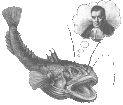UW Aquatic & Fishery Sciences Quantitative Seminar
Tim Walsworth
University of Washington, School of Aquatic and Fisheries Science
Estimating historical changes in coho salmon escapement when data are sparse – a Bayesian hierarchical approach
Abstract
Knowledge of population demographic parameters is critical to the effective management and conservation of fish and wildlife populations. Often, however, there are limited data available for stocks of interest, particularly for those that are remote or only of recent management interest. Incorporation of external data into a Bayesian hierarchical modeling framework can inform parameter estimates in data poor systems. Alaskan salmon fisheries are managed for escapement goals, with species- and stock-specific goals set for rivers supporting commercial fisheries. The Chignik River watershed is home to populations of sockeye salmon, which support a valuable commercial fishery, and a smaller, temporally distinct coho salmon run which is not directly targeted for harvest. Juvenile coho salmon in the system prey heavily upon sockeye fry, presenting a survival bottleneck that may limit the productivity of the sockeye stocks. As such, there has been increasing interest in examining the potential economic benefits of a directed coho salmon fishery. Due to late run timing and seasonal removal of the weir where escapement is enumerated, escapement data are available for only first few days of the coho salmon run in most years. Thus, there is limited understanding of the productivity of the coho population and how it will respond to alternative harvest strategies. Here, we use a Bayesian hierarchical modeling structure to estimate annual peak escapement date and run duration to inform annual escapement estimates of coho salmon to the Chignik River. The hierarchical structure allows information from years with more complete data to inform parameter estimates in data poor years. Additionally, we examine models incorporating escapement timing information from nearby “surrogate” rivers that may demonstrate similar spawning run timing as the Chignik River.

